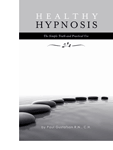Chronic lack of sleep poses a lot of known debilitating effects such as fatigue, lack of clear judgment and decision making, inability to focus, slowed response, mood changes, irritability and reduced energy levels. Little did people know that with sleep imbalance, a lot more disruptions in body processes happen inside the body.
Latest researches look into other serious effects of lack of sleep. The UCLA research team released a report which says that losing sleep even for a night may cause abnormalities in cellular pathways which induces tissue damaging inflammation reactions. On the other hand, a good sleep can decrease the risk of heart disease and rheumatoid arthritis.
Inside our body, there is this substance which main task is to signal inflammatory processes – the nuclear factor (NF)-κB. It was observed that after subjects were deprived of sleep for just one night, the day after, activation of (NF)-κB signaling was significantly greater as compared to the baseline measurements. Interestingly, this increase was only seen among female subjects.
This finding, according to the team may strengthen the link between sleep disturbance and the wide array of medical conditions such cardiovascular disease, arthritis, diabetes, certain cancers, and obesity. Dr. John H. Krystal says, “the closer that we look at sleep, the more that we learn about the benefits of sleeping.”
Accordingly, another research by the Brigham and Women’s Hospital in Boston looked into the relationship of sleep imbalance and cardiovascular risks. Dr. Najib Ayas says, “sleep is probably one of the pillars to a healthy lifestyle. Too little sleep puts stress on the body.” This was after they found out that women who have been sleeping less and more than the usual sleeping hours had increased risk of developing heart disease.
Undeniably, the length of sleep really does matter. There is 45% risk of having heart problems among women sleeping 5 hours of less. Those who slept six hours only had 18% increased risk while those who slept for seven hours only had 9% risk.
If less is bad, then adding more to these hours might make it good. However, people should not add too much to their sleeping hours. This can be supported by the finding that women who slept nine hours have 38% increased risk for developing heart problems as compared to women who slept for 8 hours.
The possible rationale behind these data is the increase in cortisol, a hormone which is secreted during any stressful situation (physical, emotional, physiological, etc.) This has long been associated with the increase in blood pressure. On the other hand, increased risk among those with longer hours of sleep is probably associated with depression, sleep apnea and chronic pulmonary disease.
These figures have become more relevant as results of the Sleep in America poll by the National Sleep Foundation show an increasing incidence of people who have less sleep. The trend shows that fewer adults are getting 8 hours of sleep. Average sleep of women is 7 hours as compared to men with 6.7 hours per night.
Women are said to be more likely to report symptoms of insomnia (63% as compared to men with 54%.) More women also report frequent daytime sleepiness (20% vs. 13% for men.) Furthermore, more than one quarter of women even said that they need to get more sleep so that they can be totally alert the following day.
All these data then encourage patients to discuss with their doctors their sleep hygiene: quantity and quality of sleep, daytime sleepiness, snoring, pauses in breathing, leg movements or other disruptions during the night – all of which can affect their current and future overall state of health.
By: Gerrard Mackenzie
While James Braid was making quantum leaps with hypnosis, another Scottish doctor, Dr. James Esdaile, was experimenting and gaining permanent recognition in the history of hypnosis. Stationed in Hoogly, India, James Esdaile used hypnosis in surgery with astounding results; and even today many would say that Dr. Esdaile’s work with applied hypnosis almost borders on the fantastic.
James Esdaile submitted reports at the end of 1846 indicating that Dr. Esdaile had performed several thousand minor operations and about 300 major ones, including 19 amputations, all painlessly.
Due mostly to the removal of post-operative shock through hypnosis, James Esdaile cut the 50% mortality rate of that time down to less than 8%! (One book even reported less than 5%.) The Medical Association actually accepted Esdaile’s report, and Dr. Esdaile was assigned to the Calcutta hospital to continue “mesmeristic” operations. (more)
By: Paul Gustafson
Milton Hyland Erickson, (5 December 1901 in Aurum, Nevada – 25 March 1980 in Phoenix, Arizona) was an American psychiatrist specializing in medical hypnosis and family therapy.
He was founding president of the American Society for Clinical Hypnosis and a fellow of the American Psychiatric Association, the American Psychological Association, and the American Psychopathological Association.
He is noted for his approach to the unconscious mind as creative and solution-generating. He is also noted for influencing brief therapy, strategic family therapy, family systems therapy, solution focused brief therapy, and neuro-linguistic programming. (more)
By: Paul Gustafson
I see many individuals who are paralyzed with irrational fear over day-to-day activities like riding an escalator, flying, driving, speaking, or even making direct eye contact with others. Some know when and how the fear originated but most don’t have a clue. With hypnosis we really don’t even need to know.
It is very frustrating for these individuals because intellectually they know how ridiculous their response is and how it defies logic but they feel powerless to change. What makes it even worse is that over time, with repetition, the roots of the problem grow long and strong, making it nearly impossible to establish lasting relief.
I recently sat with a client terrified of heights, any height at all. She got nervous just climbing a flight of stairs and would refuse to even try unless there was a railing on both sides. The problem was significantly affecting the quality her life.
Hypnosis offered a unique way to ‘pretend’ she didn’t have the fear, to imagine what it would be like. The advantage to doing this while in hypnosis is that the subconscious doesn’t know the difference between what we think about and what we experience in real life. So we were able to insert new preferred ground rules with how she viewed height. Then she listened to the program at home for a couple of weeks…problem solved.
By: Paul Gustafson RN CH
1. Eggs Each egg has 6 grams of protein but just 72 calories. No wonder researchers at Pennington Biomedical Research Center in Baton Rouge, Louisiana, found that eating eggs for breakfast (as part of a low-cal diet) helps you slim down.
2. Tomato sauce It’s loaded with lycopene, which makes your skin look younger and keeps your heart healthy. In fact, a Harvard study found that women with the most lycopene in their blood reduced their risk of a heart attack by 34%.
3. Dried plums(prunes) They’re packed with polyphenols, plant chemicals that have been shown to boost bone density by stimulating your bone-building cells.
4. Walnuts Just 14 walnut halves provide more than twice your daily dose of alpha-linolenic acid, an omega-3 fat that’s been shown to improve memory and coordination.
5. Brussels sprouts They have more glucosinolates (compounds that combat cancer and detoxify our bodies) than any other vegetable. For a side dish that will make you wonder why you’ve been avoiding them, slice each one into quarters, then sauté in olive oil with chopped sweet Vidalia onions.
6. Acai juice A glass or two of this anthocyanin-rich berry juice can dramatically boost the amount of antioxidants in your blood, say Texas A&M University researchers.
7. Apples They contain quercetin, an antioxidant that may reduce your risk of lung cancer.
8. Bok choy This calcium-rich veggie can protect your bones and may even ward off PMS symptoms.
9. Steel-cut oats Because they’re less processed than traditional oats, they’re digested more slowly—keeping you full all morning long.
10. Salmon You’ll get all the heart-smart omega-3s you need in a day from just 3 oz.
11. Avocados Their healthy fat keeps you satisfied and helps you absorb other nutrients. For a new u twist, brush a halved avocado (pit removed) with olive oil and grill 1 minute. Serve with red onion, sliced grapefruit and balsamic vinegar.
12. Spinach A half-cup provides more than five times your daily dose of vitamin K, which helps blood clot and builds strong bones.
13. Canned pumpkin It’s filled with natural cancer fighters alpha- and beta-carotene.
14. Cauliflower White foods can be good for you! This one is packed with cancer-fighting glucosinolates.
15. Scallops A 3-oz serving has 14 grams of protein but just 75 calories.
16. Collard greens They’re exploding with nutrients like vitamin A, zeaxanthin and lutein, which keep your eyes healthy.
17. Olives They deliver the same heart-healthy monounsaturated fat you get in olive oil, but for just 7 calories per jumbo olive!
18. Brown rice It’s a top source of magnesium, a mineral your body uses for more than 300 chemical reactions (such as building bones and converting food to energy).
19. Oysters These keep your immune system strong. A 3-oz serving (about 6 oysters) dishes up a quarter of your daily iron, plus nearly twice the zinc and all the selenium you need in a day.
20. Edamame One cup has a whopping 22 grams of plant protein, as well as lots of fiber, folate and cholesterol-lowering phytosterols.
21. Strawberries They’re loaded with ellagitannins, phytochemicals that may halt the growth of cervical and colon cancers.
22. Lentils A great source of meat-free protein, a half-cup of cooked lentils also gives you nearly half your daily folate, a B vitamin that protects a woman’s unborn baby from neural tube defects.
23. Bran flakes Their whole grains keep your heart in tip-top shape by reducing inflammation and melting away belly fat.
24. Kiwi Italian researchers found that it reduces asthma-related wheezing, thanks to its high vitamin C content (one kiwi has 110% of your daily requirement).
25. Black beans They’re loaded with protein, fiber, and flavonoids—antioxidants that help your arteries stay relaxed and pliable.
26. Sunflower seeds A quarter-cup delivers half your day’s vitamin E, which keeps your heart healthy and fights infection.
27. Sardines 3 oz provide more than 100% of your daily vitamin D. Sardines are also a top source of omega-3 fats. Try adding mashed canned sardines to marinara sauce and serving over whole-wheat pasta.
28. Asparagus A half-cup supplies 50% of your daily bone-building vitamin K and a third of your day’s folate, it’s a natural diuretic so it banishes bloating, too.
29. Bananas They’re loaded with several kinds of good-for-you fiber, including resistant starch (which helps you slim down).
30. Broccoli sprouts They have 10 times more of the cancer-preventing compound glucoraphanin than regular broccoli.
31. Fat-free milk With a third of the calcium and half the vitamin D you need in a day, plus 8 grams u of muscle-building protein, it’s the ultimate energy drink.
32. Baked potatoes Each one packs a megadose of blood-pressure–lowering potassium—even more than a banana.
33. Sweet potatoes Half of a large baked sweet potato delivers more than 450% of your daily dose of vitamin A, which protects your vision and your immune system.
34. Flaxseed Not only is flaxseed loaded with plant omega-3s, it also has more lignans (compounds that may prevent endometrial and ovarian cancer) than any other food. Store ground flaxseed in your refrigerator and sprinkle on yogurt, cold cereal or oatmeal.
35. Greek yogurt It has twice the protein of regular yogurt.
36. Dried tart cherries Researchers at Michigan State University found their potent anthocyanins help control blood sugar, reduce insulin and lower cholesterol.
37. Wheat germ A quarter-cup gives you more than 40% of your daily vitamin E and immune-boosting selenium.
38. Whole-wheat english muffins You get 4 ½ grams of fiber for only 134 calories.
39. Tea Both green and black tea prevent hardening of the arteries, according to researchers at the University of Scranton.
40. Peanut butter This smart spread has arginine, an amino acid that helps keep blood vessels healthy.
41. Blackberries The king of the berry family boasts more antioxidants than strawberries, cranberries or blueberries.
42. Mustard greens These “greens” (actually a cruciferous veggie) are a top source of vitamin K. For a tasty pesto, chop them in a food processor with garlic, walnuts, Parmesan and olive oil.
43. Grapes They’re a leading source of resveratrol, the plant chemical responsible for the heart-healthy benefits of red wine.
44. Soy milk A good source of vegetable protein, calcium-enriched soy milk has as much calcium and vitamin D as cow’s milk.
45. Brazil nuts They have more selenium than any other food. One nut delivers your entire day’s worth!
46. Canola oil A Tbsp of this heart-healthy oil has all the alpha-linolenic acid you need in a day, plus two different forms of vitamin E.
47. Blueberries They improve memory by protecting your brain from inflammation and boosting communication between brain cells.
48. Oranges One orange supplies more than 100% of the vitamin C you need in a day. It’s also a good source of calcium and folate.
49. Watercress With just 4 calories per cup, this cruciferous veggie delivers a hefty dose of vitamin K, zeaxanthin, lutein, beta-carotene and cancer-fighting phytochemicals.
50. Turkey breast It has 20 grams of satisfying protein but just 90 calories per 3-oz serving.
51. Barley A top source of beta-glucan, a fiber that lowers cholesterol and helps control blood sugar.
52. Shiitake mushrooms One serving (about ¼ lb) provides as much vitamin D as you’d get from a glass of milk.








